For all those not in the know, Dark Souls was a medieval fantasy action RPG developed by From Software and released on PS3 and Xbox 360 in 2011. The game took the world by storm; gaining critical acclaim based on the depth of its combat, intricate level design and world lore, as well as garnering commercial success with more than 2 million units sold worldwide.
The main achievement of Dark Souls was in how it managed to refine gameplay mechanics incorporated by the cult-classic Demon’s Souls and introduced in the archaic Kings Field series; leading to popularization of the sub-genre known as ‘Souls-like’ and bringing it into the mainstream consciousness as a permanent fixture of the videogaming zeitgeist.
After seven long years since its initial release, Dark Souls Remastered aims to bring this last-gen classic, along with its ‘Artorias of the Abyss’ DLC, to the current gen console systems and PC hardware, so as to enable new crop of players to experience the Souls staple combat, level-design and challenge of Dark Souls and its sequels on a single platform.
While the original Dark Souls is considered a classic, the nature of Dark Souls Remastered begs the question whether its gameplay still holds up to contemporary standards, or has it become outdated and eclipsed by Dark Souls II and Dark Souls III as well as spiritual successors like Bloodborne and Nioh?
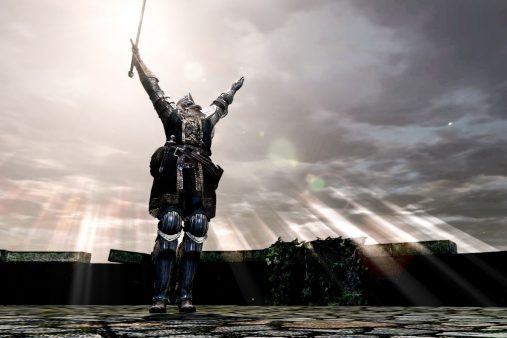
Set under the backdrop of dark medieval fantasy, Dark Souls explores themes of gods, dragons, demons and undead plague as well as the impending cycle of light and dark. The game abandons the norm of exposition heavy narrative in favour of a more cryptic method of storytelling, where lore is imparted through Items and weapon descriptions, NPC interactions and environmental details.
The core gameplay mechanics in Dark Souls revolve around a combination of tactical combat, exploring inter-connected labyrinthian levels, fighting diverse set of enemies and gaining experience to level up stats and weaponry.
This experience comes in shape of Souls, which act as the main currency of the series. Souls are gained by defeating enemies and can be used for levelling up your character, upgrading your weapons and buying items, weapons, armour and spells from different NPCs. This mechanic is implemented in manner where death results in the players losing all unspent souls unless they are able to recover their souls on their very next try.
While this mechanic might act as a source of challenge and frustration during gameplay, the often-touted high difficulty of the Souls games is a complete misnomer. Dark Souls has a stamina based tactical combat system that rewards careful approach and punishes rash actions. The key to success is to not mistake it for a mindless hack and slash game and try to figure out patterns for every new enemy and exploit its movements according to the environment and terrain.
Dark Souls offers a 40-50-hour campaign through an immersive world that is engaging enough to compel players to spend 100+ hours exploring hidden areas, finding hundreds of new weapons and dozens of spells as well as experiencing the perpetual spiral of venturing into New Game + and beyond.
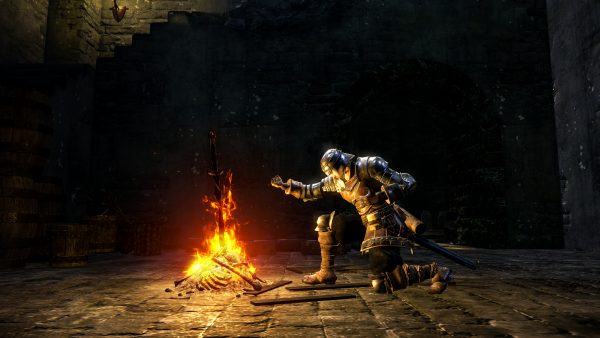
Since this is not a remake, Dark Souls Remastered is essentially a straightforward port of the ‘Prepare to Die’ edition that was released on PC in 2012 with scant graphical touches, better resolution, stable framerate and a few quality-of-life improvements that serve to replace archaic systems of the past and bring the Dark Souls experience closer to that of its sequels.
These quality-of-life improvements basically include adding the ability for players to re-map jump button, ability to resize the user interface, select and use multiples of an item at the same time, change Covenants at bonfires and an addition of a convenient bonfire near a certain blacksmith.
Moreover, where the previous versions struggled to maintain 30fps during gameplay, Dark Souls Remastered maintains a stable 60fps, even in the infamously laggy levels like Blighttown, Lost Izalith and New Londo, which were notorious for destroying framerates in previous gen versions.
However, despite all these improvements, the real fear of playing Dark Souls Remastered is if its gameplay systems have become outdated by presence of its direct sequels like Dark Souls III or indirect successors like Bloodborne. Fortunately, none of these games that came after its release were ever able to the capture the uniqueness of the first Dark Souls game, which was its interconnected world.
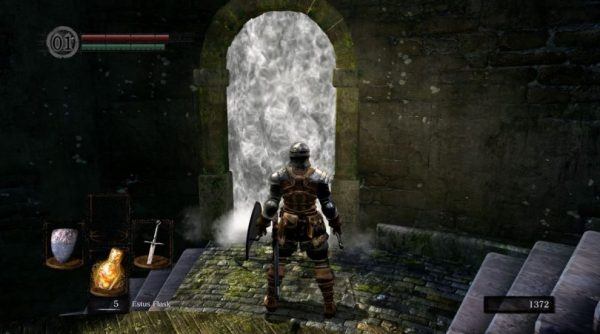
While the original Dark Souls is often known for its souls mechanic or unforgiving difficulty, its real hallmark was the intricately detailed and intuitive world design. A design choice that made each level a deliberately crafted experience that seamlessly connected to other places, making each nook and cranny equally important and their exploration a compulsion.
This overall level design remains unchanged in Dark Souls Remastered, as the game retains this interconnected world where doors and passages that seemingly lead nowhere early on, turn out to be clever shortcuts to various sections of the overworld; a feat that is made all the more impressive when considering that there is zero loading, and a lot of verticality to the layout of the world.
While the game world remains the same, Dark Souls Remastered does present it with a few graphical improvements, most prominent of which is increased resolution output. Where the original versions of Dark Souls were locked at 720p, Dark Souls Remastered renders the game at 1080p on base PS4 and Xbox One, native 4K on PC and at an upscaled 1800p on PS4 Pro and Xbox One X. The pixel density of the original game holds up well as it still delivers a sharp beautiful image at the higher and upscaled resolution.
Aside from extra antialiasing afforded through the new edition of the game, the lighting model of the game as received a big overhaul. Dark Souls Remastered not only makes changes to effects like dust particles, spells, item drops and fog doors but also adds volumetric effect and ambient occlusion to assets that dynamically light up the environment through its reworked lighting system.
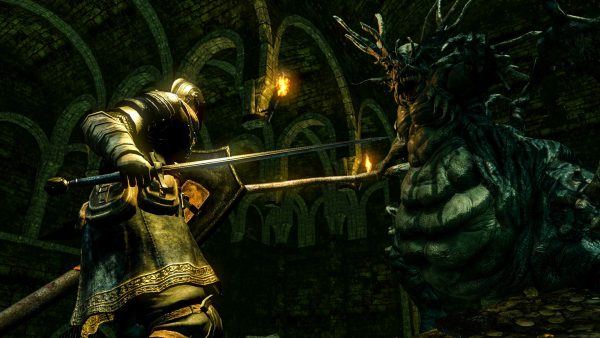
However, not all change is positive when it comes to Dark Souls Remaster’s new lighting system. While the game does benefit from better particle effects and renewed environment and item reflections, the remaster’s lighting creates several instances with flat lighting, absence of deep blacks and lack of bloom shader effect in the skybox.
This results in lack of atmospheric glow in the environment and creates a washed out, less vibrant feel, reminiscent of the original version of Dark Souls 2, before its lighting was colour corrected in Scholar of the First Sin edition.
Similarly, the improvement in textures is also a mixed bag. While some textures are touched on and tweaked, other textures remain the same, creating a visually inconsistent experience. Along with this, most, if not all of the assets in the game are copied straight from the original version of the game.
In fact, the old PC version of the game with free DSfix and 4K mod has considerably better textures and looks crisper compared to this remaster. Unfortunately, with the release of Dark Souls Remastered, Bandai Namco has taken Dark Souls: Prepare to Die Edition off the Steam store.
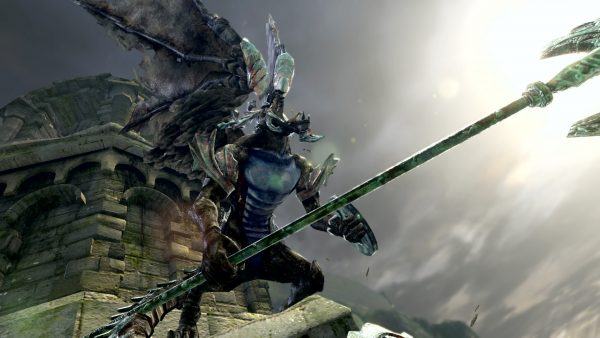
Aside from the small quality-of-life gameplay changes and inconsistent visual improvements, one of the major changes brought forward by Dark Souls Remastered is in its revitalized multiplayer. The game sees a variety of changes made to the online multiplayer of the original game; including the addition of dedicated servers, the maximum number of players online increased to six, and the addition with password matchmaking, which was first introduced in Dark Souls III.
Furthermore, Dark Souls Remastered also allows PvP arenas to feature 3v3 and 6 player deathmatch game modes, to go along with the 1v1, 2v2 and 4 player deathmatch modes that were already in place in the original Dark Souls. Arena can also utilize password matching for play with friends or tournaments, with respawn points now being random rather than in fixed places.
Unfortunately Dark Souls Remastered does not afford same level of effort for changes or additions to the singleplayer gameplay experience of Dark Souls. The game sorely lacks easy improvements like addition of omni-directional rolling or reworking of Lost Izalith, and neither does it feature cut content from the original game or remixing of item and enemy locations, as was done in the current-gen Scholar of the First Sin version from the vanilla last-gen version of Dark Souls II.
At the end of the day Dark Souls Remastered is a straight port of a 7 year old last-gen game with a slight face-lift, and the value it brings to the table is directly linked to the expectations of the player.
If you are a player who is looking to experiencing Dark Souls for the first time, whether as a complete newbie to the Souls franchise, or someone who experienced newer games in the series and seeking to play the first, then Dark Souls Remastered is a perfect entry point into Dark Souls as a game as well as the “Souls games” in general.
However, if you already own the game the question you should ask yourself is if steady framerate, upscaled resolution and revamped online multiplayer are enough of an incentive to repurchase and replay the game? If the answer to that question is an absolute yes, then Dark Souls Remastered is the game for you; if not, then there is not much value for you in this remaster product.
Gameplay:
As a faithful remaster of Dark Souls, Dark Souls Remastered features the same challenging and engaging stamina-based tactical action present in the original, now supplemented by couple of quality of life improvements and variety of additions to its online multiplayer component.
Presentation:
While Dark Souls Remastered does improve framerate, resolution and particle effects, the presence of washed out lighting and uneven textures dampen its overall presentation.
Story:
The game retains its unique storytelling structure that emphasizes bulk of narrative structure on lore gained through item and environment exploration, rather than plot development through expositions and cutscenes.
Value:
Even after considering the quality of classic game at hand, Dark Souls Remastered still struggles with providing enough improvements to warrant the asking price for which complete Remakes are released in current market.
Verdict:
Aside from a few quality of life improvements, better resolution and additional online functionality, there’s nothing else new in the package offered by Dark Souls Remaster. While it successfully functions as a competent de facto version of Dark Souls for new players, the game does not hold much value for anyone who already owns previous version on PS3, Xbox 360 or PC.
